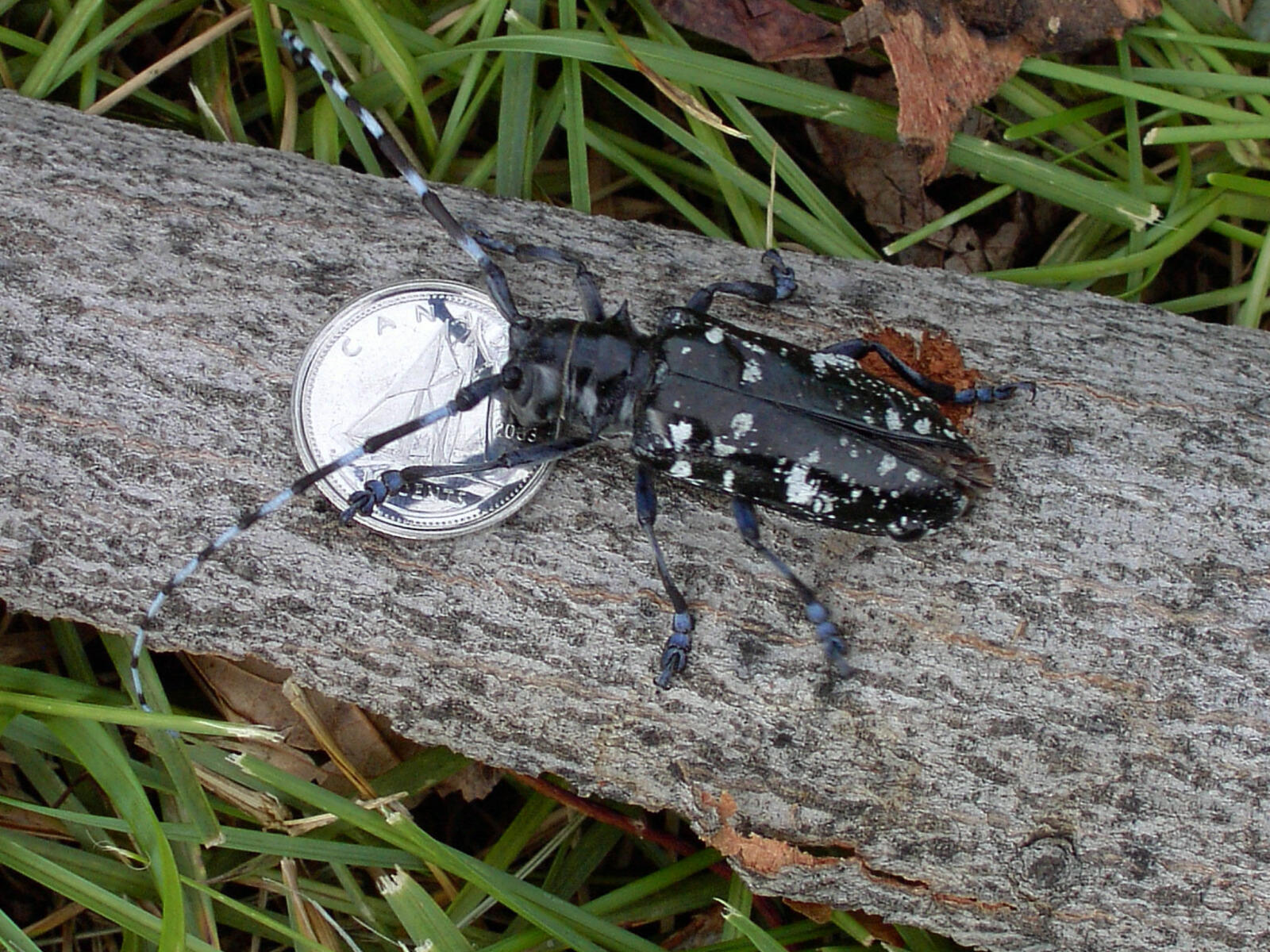October 21, 2013

Asian long-horned beetle found in Mississauga
The Canadian Food Inspection Agency (CFIA) confirmed the presence of Asian long-horned beetle (ALHB) on Sept. 20 in an industrial area near Pearson International Airport in Mississauga.
The CFIA is working with other federal departments and provincial and municipal governments to survey the area and determine next steps.
Between 2003 and 2007, ALHB was known to exist in the cities of Toronto and Vaughan. A quarantine area was established and control efforts were undertaken. Based on international standards, the pest was considered eradicated earlier this year, after not being detected for five years.
This new find is outside of the eradicated area. Based on the CFIA’s national plant pest surveillance program, the ALHB has never been detected elsewhere in Canada.
The ALHB can attack several common species of hardwood trees, such as maple. It eventually kills infested trees. It can fly short distances but can also spread through the movement of infested wood.
Any sightings of the beetle or signs of related damage should be reported to the CFIA. Signs of infestation may include perfectly round exit holes (about 3/8 to 1/2 inch in diameter) made by adult beetles when they emerge from trees; pockmarks on tree trunks and branches where female beetles deposit eggs; frass produced by larval feeding and tunneling; early fall colouration of leaves or dead branches, and running sap produced by the tree at the egg laying sites, or in response to larval tunneling.
Moving untreated firewood, even just a few kilometres to or from a campground or cottage is a common way for invasive insects and diseases to spread.
Additional information is available at www.inspection.gc.ca/pests. As well, Landscape Ontario will keep members up-to-date through the weekly e-news and on www.horttrrades.com.
The CFIA is working with other federal departments and provincial and municipal governments to survey the area and determine next steps.
Between 2003 and 2007, ALHB was known to exist in the cities of Toronto and Vaughan. A quarantine area was established and control efforts were undertaken. Based on international standards, the pest was considered eradicated earlier this year, after not being detected for five years.
This new find is outside of the eradicated area. Based on the CFIA’s national plant pest surveillance program, the ALHB has never been detected elsewhere in Canada.
The ALHB can attack several common species of hardwood trees, such as maple. It eventually kills infested trees. It can fly short distances but can also spread through the movement of infested wood.
Any sightings of the beetle or signs of related damage should be reported to the CFIA. Signs of infestation may include perfectly round exit holes (about 3/8 to 1/2 inch in diameter) made by adult beetles when they emerge from trees; pockmarks on tree trunks and branches where female beetles deposit eggs; frass produced by larval feeding and tunneling; early fall colouration of leaves or dead branches, and running sap produced by the tree at the egg laying sites, or in response to larval tunneling.
Moving untreated firewood, even just a few kilometres to or from a campground or cottage is a common way for invasive insects and diseases to spread.
Additional information is available at www.inspection.gc.ca/pests. As well, Landscape Ontario will keep members up-to-date through the weekly e-news and on www.horttrrades.com.